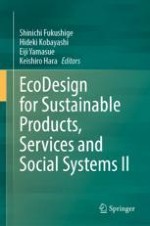2024 | OriginalPaper | Buchkapitel
20. Discussion on the Reuse of Suboptimal Food Through the Perspective of Sustainable Food Circle
verfasst von : Jui-Che Tu, Ku-Hsi Chu
Erschienen in: EcoDesign for Sustainable Products, Services and Social Systems II
Verlag: Springer Nature Singapore
Aktivieren Sie unsere intelligente Suche, um passende Fachinhalte oder Patente zu finden.
Wählen Sie Textabschnitte aus um mit Künstlicher Intelligenz passenden Patente zu finden. powered by
Markieren Sie Textabschnitte, um KI-gestützt weitere passende Inhalte zu finden. powered by
